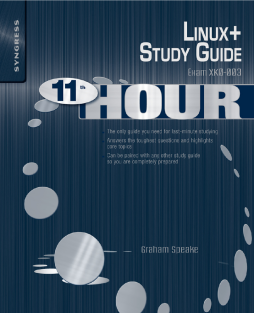
Additional Information
Book Details
Abstract
Eleventh Hour Linux+: Exam XK0-003 Study Guide offers a practical guide for those preparing for the Linux+ certification exam.
The book begins with a review of important concepts that are needed for successful operating system installation. These include computer hardware, environment settings, partitions, and network settings. The book presents the strategies for creating filesystems; different types of filesystems; the tools used to create filesystems; and the tools used to administer filesystems. It explains the Linux boot process; how to configure system and user profiles as well as the common environment variables; and how to use BASH command line interpreter.
The remaining chapters discuss how to install, configure, support, and remove applications; the configuration of Linux as a workstation and as a server; securing the Linux system; and common tools for managing a system. Each chapter includes information on exam objectives, exam warnings, and the top five toughest questions along with their answers.
- Fast Facts quickly review fundamentals
- Exam Warnings highlight particularly tough sections of the exam
- Crunch Time sidebars point out key concepts to remember
- Did You Know? sidebars cover sometimes forgotten details
-
Top Five Toughest Questions and answers help you to prepare
"This unique text offers an attractive, reader-friendly layout, demonstrating concepts creatively with thought provoking color and b&w photos, illustrations, and images, many from art history. The volume is designed so that readers can jump from image to image and find the core ideas of the chapter. Sidebars of key ideas also increase the book's browsability. Employing a multidisciplinary approach to information architecture and the design of the new pervasive information spaces, the book draws on insights in diverse disciplines from cognitive psychology to cinema. Each chapter begins with a short story and concludes with case studies and a list of articles, books, movies, and videos. Part 1 surveys information architecture as both a field of practice and a research discipline. Part 2 illustrates five design principles, and Part 3 shows how to apply these principles with a real-life case study. Parts 2 and 3 include boxed contributions from international authors, researchers, and practitioners. Readers can access a companion web site and a blog."--Reference and Research Book News
